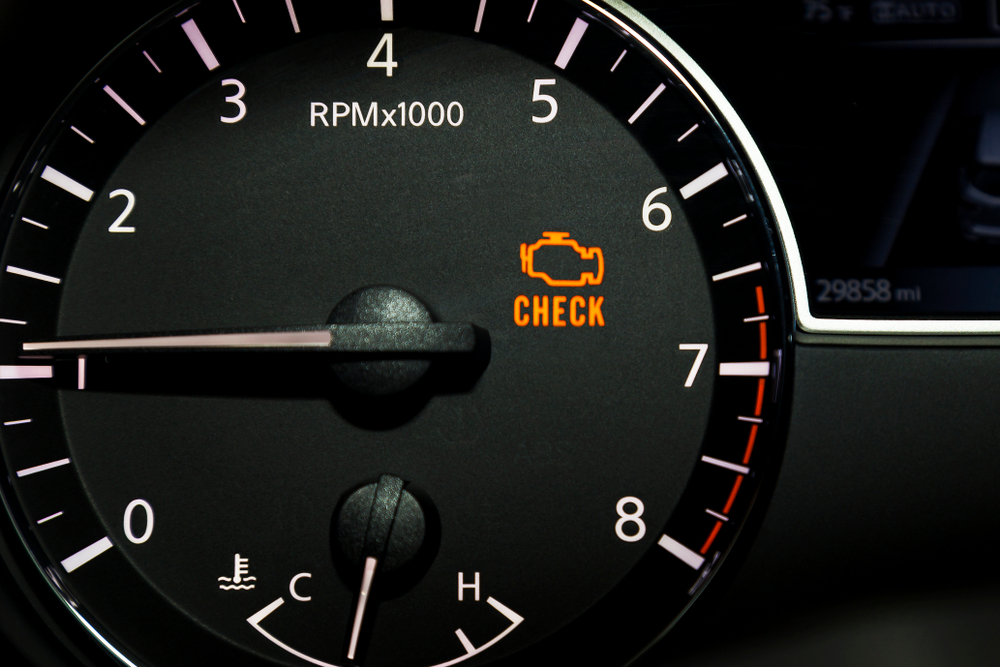Engines are really complicated. They use a ton of math and science to run as efficiently as possible. Fortunately, we don’t need to worry about it because there are computers on the engine that do the work for us. Those computers use many sensors to monitor the engine and convert it to useful information that you can use to drive safely.
Speed sensors are some of those sensors the computer uses, and it can be frustrating when one fails. In this article, we will look at what a speed sensor does, what happens when it fails, and how to replace it.
What a Speed Sensor Does
A car’s brain, called the PCM or powertrain control module, uses the information it receives from a ton of sensors to make sure your car is running as efficiently as possible. That includes matching the engine and transmission speeds to the vehicle’s speed to ensure you aren’t over-revving or having to burn extra fuel.
To measure the engine speed and the transmission speed, your car employs the help of speed sensors. The actual number and types of speed sensors vary depending on car make and model. Still, there are two common ones: the engine speed sensor and the transmission speed sensor.
Engine Speed Sensor
The engine speed sensor simply measures the number of times your crankshaft rotates in one minute. We call these revolutions, and it’s how we calculate RPMs, aka revolutions per minute.
On the dashboard, the information from the engine speed sensor is displayed by the tachometer. In the olden days, tachometers were actually long springs, linkages, and wires that measured the RPMs mechanically. Nowadays, though, it’s just a display of the electronic information generated by the sensor.
Transmission Speed Sensor
When people refer to the “speed sensor” they usually mean the vehicle speed sensor or transmission speed sensor. The transmission speed sensor measures the rotations of the output shaft of the transmission. It uses the result to calculate how fast you are going.
The transmission speed sensor is displayed on your dash as the speedometer. Just like the tachometer, older vehicles used springs and wires to mechanically measure speed. Modern speed sensors simply generate an electric signal that gets sent to the PCM, and the PCM translates it into the number that gets displayed.
What Happens When It Fails
When a speed sensor fails, it’s usually not the end of the world. At worst, you might lose a few MPGs until you get it fixed. If you suspect that you have a faulty speed sensor, you first need to know the primary symptoms. To narrow down the symptoms, you need to know whether you have an old school mechanical sensor or a newer electronic sensor.
Mechanical Connections
If you have a classic car or a cheaper car from the early 90s, you probably have a physical connection between your speed sensor and the dash. That makes diagnosing the problem really easy.
If your RPM or speed gauge don’t work, you either have a broken gauge or a broken sensor. It’s usually the sensor. Old sensors are just gear with an output shaft, and that output shaft can break apart over time.
Electronic Sensor
Electronic sensors can cause a few more problems when they go bad because they are connected to the PCM or ECU first. Generally, there are four areas where the symptoms of a bad sensor will show up.
The Gauges
Just like with a failed mechanical counter, a failed electronic sensor will cause your gauges to fail. Unfortunately, it’s not quite as straightforward as it would be with the mechanical gauges since some modern cars have fancy GPS speedometers. Some modern cars don’t have an RPM display at all, so if the engine speed sensor goes out, there’s nothing to indicate it on the dash.
However, if your speedometer or tach do suddenly stop working, it’s probably because their related speed sensor failed. It is very unlikely that the digital dash has failed, and it’s even less likely that the PCM is having that specific issue.
Cruise Control
If you get on the highway one day and your cruise control just doesn’t want to work, chances are that the transmission speed sensor is the culprit. Modern cars regulate speed by adjusting power output to maintain transmission output speed. If the output speed sensor isn’t working, the car won’t know what speed to maintain.
Check Engine Light

Anytime a sensor fails, the PCM will generate a fault code and turn the check engine light on. You can then scan the car with an OBD2 scanner like one of the ones we recommend, and it will tell you which sensor is having an issue.
Unlike other engine sensors, it’s possible for transmission sensors to fail and not generate a code. The engine fault codes are all standardized and necessary to comply with smog regulations. Still, some cars use a separate computer to manage the transmission (called a TCM, transmission control module). It may not be hooked up to the OBD2 circuits.
Automatic Transmission Gear Selection
Modern automatic transmissions rely on the PCM or TCM to tell them when to shift. If the control modules are not getting the correct information, they won’t know when the best time to shift is.
The way this usually manifests is hesitation. You will feel like you put your foot down, and the car just doesn’t wanna shift. After some gentle nudging, it will drop a gear and accelerate.
If you are experiencing this, it could also be that your TCM is failing. Replacing the transmission speed sensor is much cheaper and easier than replacing a TCM, though, so it’s better to try that first.
Is It Safe to Drive With a Bad Sensor?
Driving with a bad speed sensor poses very little risk to your car. However, it’s probably not a good idea because you won’t be able to accurately operate the vehicle. In fact, in some states, it is illegal to drive without a functioning speedometer.
If your speed sensor does break and you still need to drive around before it can be fixed, consider downloading a GPS speedometer app like this one from Tim O’s Studios. That way, at least you’ll be able to avoid speeding tickets.
How to Replace a Speed Sensor
If you suspect you have a bad speed sensor, you have a couple of options. The first option is to take it to a mechanic. Most shops won’t have any issue replacing a speed sensor in a short amount of time.
The second option is to do it yourself. Most speed sensors only require a handful of tools to replace, and there are not any special techniques that need to be utilized.
Paying a Mechanic
If you decide to take the car to a shop rather than attempt to replace the sensor yourself, you can expect to pay them for one or two hours of shop time in addition to the cost of the part. Most speed sensors are inexpensive, but it depends on your make and model.
One example is a Honda Civic. A Honda Civic is a very popular vehicle, and the vehicle speed sensor is around $30. Many vehicles will be cheaper and others are more expensive. Shop time is usually between $75 and $150 per hour, so you should budget at least $250 to have your sensor replaced by a pro.
DIY
If you want to replace the sensor yourself, you can save a few hundred dollars. All you need is a good set of basic tools, like socket wrenches and screwdrivers. Here is a general outline of what to expect.
Locate the Sensor
This step may honestly be the most difficult. On RWD cars, the transmission output sensor can be easy to get to. Simply raise the car up, put it on jack stands, and feel around the transmission until you find the sensor.
On most cars, though, it’ll be buried underneath a lot of stuff. Using google or a service manual can save you a lot of time looking.
If you have an old-style mechanical gauge, all you have to do is follow the cable from the firewall to the sensor.
Clean the Area
Most sensors are installed into holes that lead directly into the engine. It’s the last place you want to accidentally scrape grime into. By blasting the area with a degreaser and wiping it off, you can greatly reduce the chance of getting dirt where it shouldn’t be.
Unplug the Wires
When you unplug the wires, be careful with the plastic connector. Most engine sensors use a type of connector that you will need a small flat screwdriver to undo. Those connectors can become brittle over time, and it can be easy to become very impatient with them and simply break them apart. They are somewhat difficult to replace, though, so try to be careful with them.
Undo the Retaining Bolts
Most speed sensors are simply held in with one single bolt. Unfortunately, they are usually in a very inconvenient spot. Use extensions and universals to make your life easier.
One of the tools that can really help when spelunking in the engine bay is the “pickle grabber” parts retriever. It’s a long, bendable tube with a claw on the end. That way, you can feel like you are playing a prize grabber game when you drop a bolt into the only space too small for your hand to fit on the entire engine.
Remove the Old Sensor
Once the bolt is out, the old sensor should simply lift out of the housing.
Install the New Sensor
Installation is simply the reverse of the removal procedure. There aren’t any special things you have to do to get the new one in. Just press, bolt, and plug it in.
Stay up to Speed
When it comes to vehicle sensors, the speed sensor may not be the most important. It is still a vital part of your driving comfort, and you definitely want to get it replaced if it goes bad. We hope this article inspired you to tackle the issue head on and get back to definitely driving the speed limit at all times.


